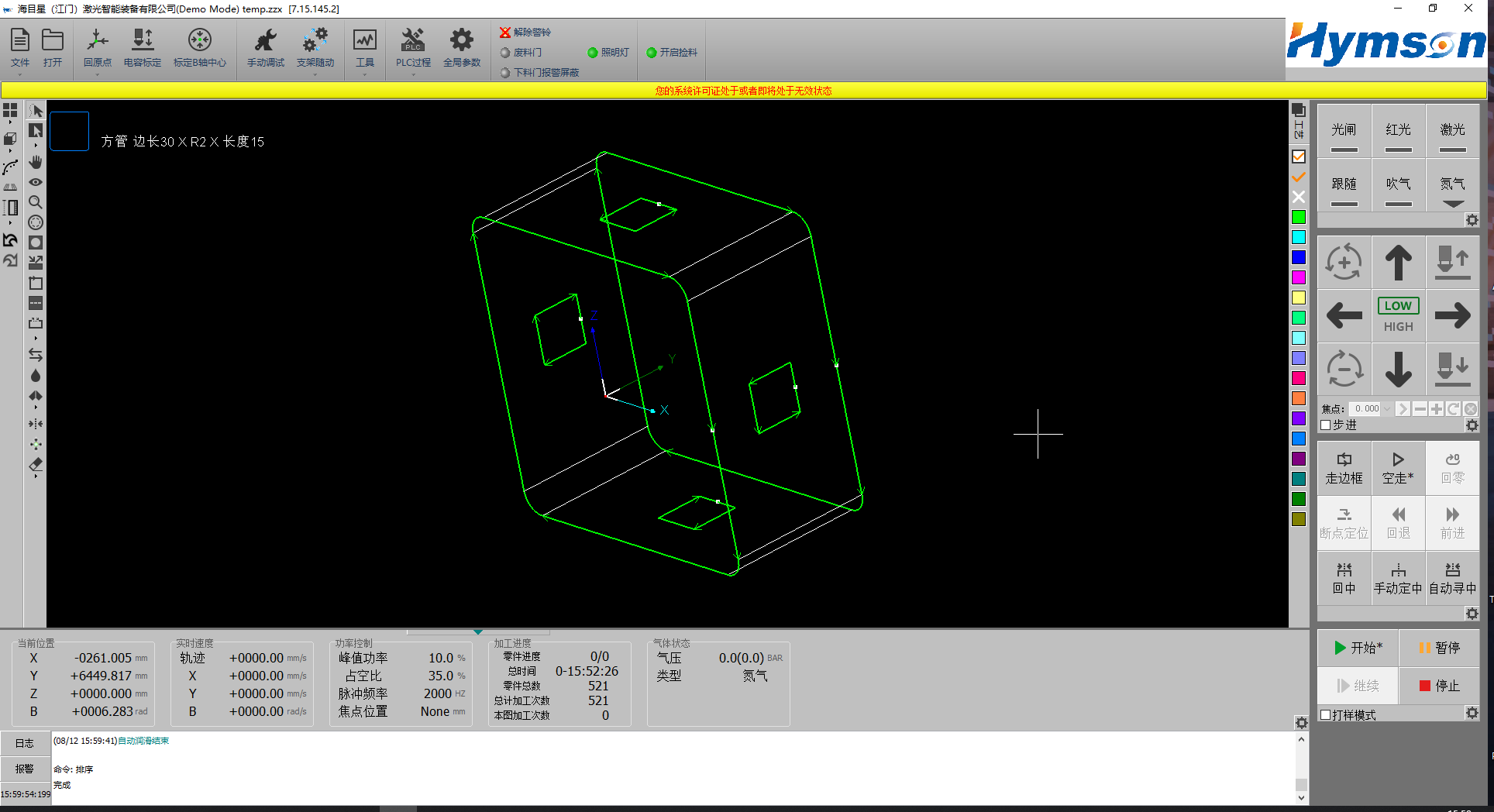
In the world of manufacturing, the demand for precision and efficiency is ever-increasing. In the realm of tube cutting, laser technology has successfully met the challenge. But where is the future of laser tube cutting headed in 2025? And how will technological innovations shape its applications?
As the authoritative industry publication, 《Industrial Laser Solutions》, noted in its annual market watch: "Looking ahead to 2025, when we evaluate a laser tube cutting machine, we will no longer focus solely on its cutting speed and power, but on its comprehensive capabilities as a smart manufacturing node—including data acquisition, self-optimization, and seamless integration with automated systems."
Let's explore this exciting development and why it is crucial for industries worldwide. Spoiler alert: it's about more than just cutting tubes; it's about a revolution in the manufacturing process.
1. How Will Laser Technology Innovations Shape Tube Cutting in 2025?
Ultra-High-Power Lasers
One of the most significant trends is the introduction of ultra-high-power fiber lasers. For example, Max Laser has released a 25,000W fiber laser, one of the highest powers currently available for cutting applications. This advancement makes it possible to efficiently cut ultra-thick materials (such as 70mm stainless steel), yielding smoother surfaces and smaller tapers compared to traditional flame or plasma cutting. The ability to efficiently process thicker materials not only boosts productivity but also reduces costs associated with secondary processing.
Unprecedented Precision and Versatility
Laser tube cutting machines are renowned for their precision and versatility. Advanced equipment in 2025 can achieve tolerances as low as ±0.05mm, making it an ideal choice for industries like automotive and aerospace that require precise specifications. These machines can cut various tube profiles—round, square, rectangular, and oval—and are suitable for a wide range of materials, including stainless steel, aluminum, and carbon steel. This flexibility allows manufacturers to quickly produce custom components while maintaining high quality.
2. The Profound Impact of Automation and Artificial Intelligence
By 2025, automation is no longer an option but a necessity. The discussion has moved far beyond simple automatic loading and unloading towards a complete, autonomously operating "lights-out production line." According to market forecasts by Grand View Research, the market share for laser tube cutting systems integrated with advanced automation solutions will grow by over 40% by 2025.
More and more tube cutting systems are being integrated with AI-driven software that can optimize cutting paths in real-time. These AI systems can learn from each cut and continuously improve to reduce errors and increase speed. Imagine simply uploading a design file, and the system automatically adjusts cutting parameters to ensure a perfect result every time. This is the direction we are heading, and it's making work easier for manufacturers worldwide.

3. New Perspective: The Rise of Data-Driven Manufacturing and Predictive Maintenance
This is one of the most revolutionary changes for 2025: equipment is no longer an information silo but a networked data hub.
- Process Digitization: Sensors throughout the machine collect vast amounts of real-time data, such as laser power, nozzle status, and gas flow, creating a "digital file" for each workpiece. This provides irrefutable evidence for quality traceability, which is especially critical in the medical device and aerospace sectors.
- Predictive Maintenance: AI algorithms continuously analyze operational data to predict potential failures weeks in advance, such as lens contamination or component wear. The system automatically sends maintenance alerts, meaning unplanned downtime can be significantly reduced, thereby greatly improving Overall Equipment Effectiveness (OEE).
4. New Perspective: Human-Machine Collaboration, Bridging the Skills Gap
With the growing shortage of skilled technicians, making complex equipment easy to operate has become an industry challenge. The technological developments of 2025 provide the answer:
- Intuitive Human-Machine Interaction: Simpler, more graphical operating systems allow less experienced employees to get up to speed quickly.
- Offline Programming and Simulation: Engineers can complete programming and cutting simulations for complex parts in the office, sending the job to the machine with a single click after verification. This maximizes the machine's effective uptime.
- Augmented Reality (AR) Assistance: Maintenance personnel can use AR glasses to see digital guides overlaid on the actual equipment, guiding them step-by-step through complex maintenance, which greatly reduces reliance on senior experts.
5. Applications of Laser Tube Cutting in Diverse Industries
The versatility of laser tube cutting is truly remarkable. As the technology evolves, it finds new applications in some of the most demanding sectors.
- Automotive Industry: Used for the precise production of critical components like exhaust systems, chassis parts, and roll cages, ensuring they meet strict safety and performance standards.
- Aerospace Industry: Used to manufacture lightweight and durable aircraft frames, landing gear, and engine components. The precision of laser cutting ensures minimal waste of expensive materials like titanium alloys.
- Construction Industry: Used to create steel beams, supports, and custom piping systems, enabling the fast and accurate cutting of complex shapes and designs needed for large-scale architectural projects.
- Furniture Manufacturing: Used to create intricate and precise designs for the frames of metal furniture, such as chairs and tables, allowing designers to explore complex shapes and patterns that are difficult to achieve with traditional methods.
- Medical Device Manufacturing: Used to produce surgical instruments, implants, and prosthetics. The technology's extreme precision ensures these components are safe, durable, and compliant with strict medical regulations.

6. How Will Laser Tube Cutting Become More Eco-Friendly in 2025?
In an era that increasingly values sustainability, the environmental impact of the technology we use is crucial. Laser tube cutting machines already make a significant contribution by reducing waste. The precision of laser cutting ensures that every inch of material is used effectively, generating minimal scrap.
Furthermore, with an electro-optical conversion efficiency of up to 50% (far exceeding that of traditional CO2 lasers), fiber lasers significantly reduce energy consumption. When this high efficiency is combined with the minimal waste produced, it's clear that laser cutting is leading the manufacturing industry toward a greener future.
7. The Rise of Fiber Lasers:What's New?
Looking to 2025, fiber lasers have become the gold standard for tube cutting. Due to their higher efficiency, lower operating costs, and superior performance, fiber lasers are replacing traditional CO2 lasers in many industries.
Unlike CO2 lasers, which require larger setups and are more energy-intensive, fiber lasers are compact, energy-efficient, and deliver high-quality cuts at greater speeds. The precision they offer is unparalleled, and they significantly reduce the time required to complete a cut.
8. The Future of Laser Tube Cutting
As we enter 2025, the future of laser tube cutting looks brighter than ever. With advancements in automation, artificial intelligence, customization, and sustainability, these machines are more than just tools—they are an integral part of the future of manufacturing.
The key takeaway is this: laser tube cutting is no longer just about cutting metal. It's about enabling industries to innovate, create, and produce with greater precision, efficiency, and sustainability. Whether you are in aerospace, automotive, or construction, the potential of laser tube cutting technology in 2025 is limitless.
Sources:
For more on the latest tube cutting laser technologies, check out LaserTech Insights.
Interested in learning more about fiber lasers? Visit Fiber Laser Solutions.
Feel free to reach out to us at Hymson laser for any inquiries or to see how our products can help you stay ahead in the industry!
Share This Post:

